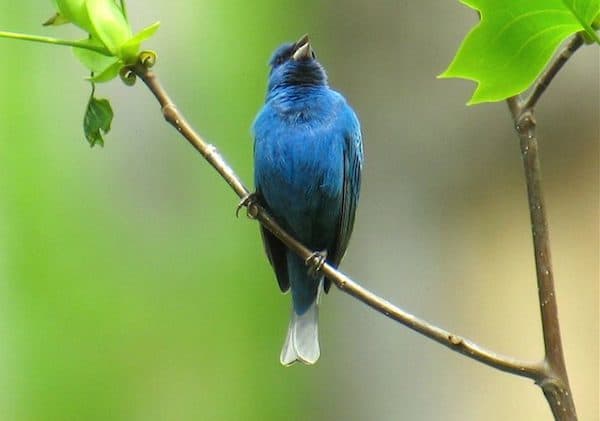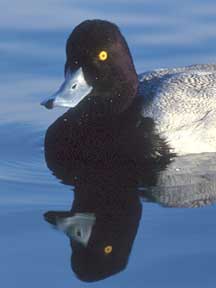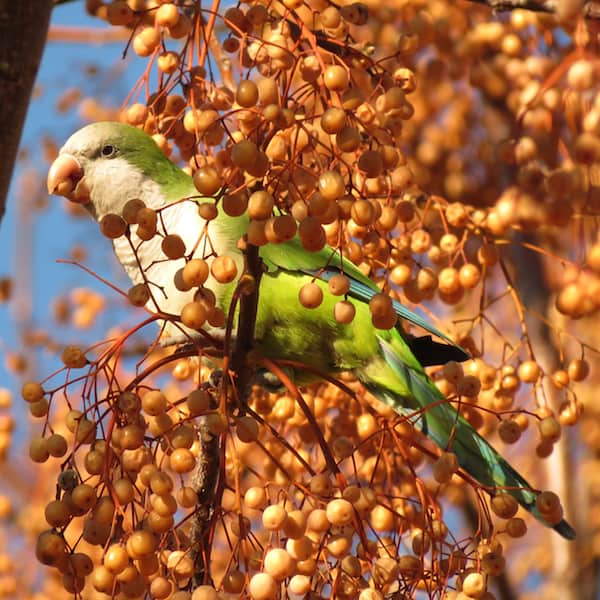Look For
Appearing all black against the light, a male indigo bunting properly lit is an unforgettable sight. The breathtaking, all-blue male indigo bunting, with his silvery conical bill, is unmistakable. Females and immatures are a warm cocoa-brown overall.
This bunting has a habit of twitching its tail to the side, and its spit! note is characteristic. Males change their blue feathers for brown in autumn, which makes for some interestingly mottled specimens. They molt again on the wintering grounds and return in spring, blue once more.
Listen for
A persistent late-season singer, he sings a jingly song comprised of paired notes that are often described as: Fire! Fire! Where? Where? Here! Here! Put it out! Put it out! Call notes, frequently given, are a sharp spick! and a short, dry bzzt! that sounds like an electric shock.
Find it
This species is common on roadsides and disturbed areas where “trashy” vegetation flourishes. Power line cuts, old fields, landfills, railroads, and hedgerows ring with the songs of indigo buntings, especially as summer reaches its fullest. Indigo buntings are strongly migratory, wintering in Central and northern South America.
Feed it
The indigo bunting takes insects when they are available, especially to feed its nestlings. Weed seeds are its mainstay, supplemented by berries and small fruits. It forages on or near the ground, as well as in low shrubs and trees. Watch for them in autumn, bending grass stems and flicking their tails side to side as they forage in weedy patches.
Nesting Behavior
Indigo buntings have a rather loose definition of monogamy, with extra-pair copulations being quite frequent. Males visit females in neighboring territories, and females visit males. Males vary in their tendency to feed young; some are attentive parents, whereas others leave most of the chick rearing to their mates.
The nest is bulky but compact, cup-shaped, and constructed of bark strips, grass and weed stems, and skeletonized leaves, all bound with spider webs. It’s often low in blackberry, sumac, or other brushy vegetation.
These birds nest quite late in the season, reflecting their dependence on late-maturing weed seeds. Three to four eggs are incubated by the female for about 12 days, and the young leave the nest from 8 to 14 days later.
WOW!
A study with caged buntings inside a planetarium, recording the direction of their flight attempts as the star pattern above them was changed, proved that Indigo Buntings use the stars to navigate during migration.




